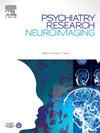EEG oscillations in recent suicide attempters: Assessing responses to positive and negative future imagination tasks
IF 2.1
4区 医学
Q3 CLINICAL NEUROLOGY
引用次数: 0
Abstract
Background
Our goal is to uncover Electroencephalography (EEG) power spectrum patterns during imagination tasks in individuals who attempted suicide within the past 1–4 weeks, addressing gaps in understanding the neural correlates of future imagination in suicidal behavior.
Methods
This case-control study comprised a total of 60 participants, consisting of 47 females and 13 males. The sample comprised three groups: Attempted Suicide + Major Depressive Disorder (SA+MDD), Major Depressive Disorder (MDD), and Healthy Controls (HC). To assess participants' future imagination, a unique approach called the Positive and Negative Future Imagination Task was designed, which involved scenario visualization concurrent with EEG recording. Statistical analyses included ANOVA with post-hoc pairwise comparisons to compare EEG power spectrum between three groups.
Results
It was observed that the SA+MDD group experienced significantly increased theta frequency band in the right frontocentral regions when compared to the MDD group during both positive and negative imagination tasks (P-value < 0.05). Furthermore, increased gamma activity was observed in the SA+MDD group compared to the HC group, predominantly in the right frontocentral areas during both imagination tasks.
Conclusion
The results of this study indicate that individuals who have recently attempted suicide exhibit heightened neural activity in the frontocentral regions of the right hemisphere of the brain, specifically in theta and gamma band frequencies, when contemplating both positive and negative aspects of the future. These findings, in the context of behavioral tasks may indicate a decrease in the ability to envision a positive future and an increase in visualizing a negative future.
近期自杀倾向者的脑电图振荡:评估对积极和消极未来想象任务的反应。
背景:我们的目标是揭示在过去1-4周内试图自杀的人在完成想象任务时的脑电图(EEG)功率谱模式,从而弥补在了解自杀行为中未来想象的神经相关性方面的空白:这项病例对照研究共有 60 名参与者,包括 47 名女性和 13 名男性。样本包括三组:自杀未遂+重度抑郁障碍组(SA+MDD)、重度抑郁障碍组(MDD)和健康对照组(HC)。为了评估参与者的未来想象力,研究人员设计了一种名为 "积极和消极未来想象任务 "的独特方法,在脑电图记录的同时进行情景想象。统计分析包括方差分析和事后配对比较,以比较三组之间的脑电功率谱:结果发现,与 MDD 组相比,SA+MDD 组在完成积极和消极想象任务时,右侧前中央区域的 Theta 频段明显增加(P 值 < 0.05)。此外,与HC组相比,SA+MDD组在两项想象任务中的伽马活动均有所增加,主要集中在右前中区:本研究结果表明,近期自杀未遂者在思考未来的积极和消极方面时,大脑右半球前中央区的神经活动会增强,特别是θ和γ波段频率。这些发现在行为任务中可能表明,设想积极未来的能力下降,而设想消极未来的能力增强。
本文章由计算机程序翻译,如有差异,请以英文原文为准。
求助全文
约1分钟内获得全文
求助全文
来源期刊
CiteScore
3.80
自引率
0.00%
发文量
86
审稿时长
22.5 weeks
期刊介绍:
The Neuroimaging section of Psychiatry Research publishes manuscripts on positron emission tomography, magnetic resonance imaging, computerized electroencephalographic topography, regional cerebral blood flow, computed tomography, magnetoencephalography, autoradiography, post-mortem regional analyses, and other imaging techniques. Reports concerning results in psychiatric disorders, dementias, and the effects of behaviorial tasks and pharmacological treatments are featured. We also invite manuscripts on the methods of obtaining images and computer processing of the images themselves. Selected case reports are also published.

 求助内容:
求助内容: 应助结果提醒方式:
应助结果提醒方式:


